German New Guinea, colonised in 1884, maintained a wireless station at Bitapaka in New Britain. In 1914 the station was a target for Naval Reservists and others of the Australian Naval and Military Expeditionary Force. It was taken at a cost of seven Australians killed and five wounded. One German and thirty Melanesians also died.
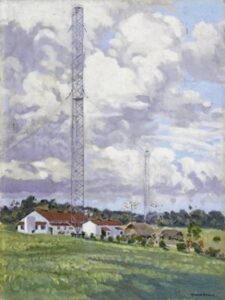
Battle of Bita Paka 11 September 1914
The Battle of Bita Paka (11 September 1914) was fought south of Kabakaul, on the island of New Britain, and was a part of the invasion and subsequent occupation of German New Guinea by the Australian Naval and Military Expeditionary Force shortly after the outbreak of the First World War. Similar to New Zealand’s operation against German Samoa in August, the main target of the operation was a strategically important wireless station—one of several used by the German East Asiatic Squadron—which the Australians believed to be located in the area. The powerful German naval fleet threatened British interests and its elimination was an early priority of the British and Australian governments during the war.
After an unopposed landing, a mixed force of German reservists and half-trained Melanesian police mounted a stout resistance and forced the Australians to fight their way to the objective. After a day of fighting during which both sides suffered casualties, Australian forces captured the wireless station at Bita Paka. The battle was Australia’s first major military engagement of the war and the only significant action of the campaign; in its aftermath the remaining German forces on New Britain fled inland to Toma. Following a brief siege there the German garrison capitulated, ending resistance to the Australian occupation of the island.
At Bita Paka Australia suffered their first casualty of World War I, with Able Seaman Billy Williams mortally wounded.

Copied from
https://www.navyhistory.org.au/research/on-this-day/on-this-day-date-lookup/
The RAN Brigade, supported by men from Australian warships, landed at Kabakaul, German New Guinea, (New Britain), to seize the German wireless station there. HMA Ships AUSTRALIA, SYDNEY, ENCOUNTER, PARRAMATTA, YARRA, WARREGO, AE1 and AE2 supported this landing, and stood by to repel any German warships. The brigade forced their way inland, encountering strong resistance from German native troops lead by German Army Reserve officers, as the RAN advanced to seize the German wireless station. Five RAN and RN naval personnel were killed or died of wounds; LCDR C. B. Elwell, RN; AB W. G. V. Williams; AB J. E. Walker; AB H. W. Street; Signalman R. D. Moffatt; Also killed was Captain B. C. A. Pockley of the Australian Army Medical Corps. AB Williams was the first to be killed, and thus had the dubious honour of being the first Australian to be killed in action during WWI. LEUT T. A. Bond, RANR, distinguished himself in the advance by single handedly capturing 30 native troops, and was later awarded the DSO, which, although not gazetted until 1916, was technically the first decoration awarded to an Australian during WWI The SS ESTURIA was chartered as a destroyer depot ship. She transferred to the RN in 1917.
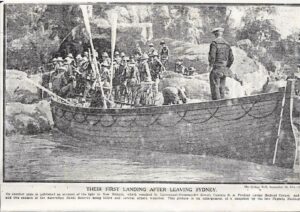
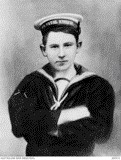
The Australian War Graves Commission maintains in the RABAUL (BITA PAKA) War Cemetery a memorial to members of the Australian Naval and Military Expeditionary Force who died during the operation to capture German New Guinea and the radio station at Bita Paka in particular. There is no memorial in Australia to the six servicemen killed as a consequence of the Battle of Bita Paka.
Extract from a Proposal to War Graves Commission to create a memorial on a Moffat family plot in Waverley Cemetery by David Cable and David Michael
The Australian War Graves Commission maintains in the RABAUL (BITA PAKA) War Cemetery a memorial to members of the Australian Naval and Military Expeditionary Force who died during the operation to capture German New Guinea and the radio station at Bita Paka in particular. There is no memorial in Australia to the six servicemen killed as a consequence of the Battle of Bita Paka.
This Project is significant as the Battle of Bita Paka was the first engagement of the enemy by Australian Forces during World War I and few Australians know about it.
The Australian Naval and Military Expeditionary Force (ANMEF) consisting of 1,000 soldier and 500 sailors was formed with the six month objective of capturing German possessions in the Pacific.
At dawn on 11 September 1914, almost 100 men, mainly naval personnel landed at Kabakul and Kokopo to capture an inland radio station thought to be near Bita Paka. The radio station was captured by evening. Six ANMEF personnel lost their lives as a consequence of this action including Able Seaman Robert David Moffatt who died of wounds on board HMAS Australia on 12 September. He was buried at sea.
Able Seaman G.V.WILLIAMS
Able Seaman JOHN COURTNEY
Lieut-Commander CHARLES B. ELWELL
Captain BRIAN COLDEN ANTILL POCKLEY
Able Seaman H.W. STREET
Able Seaman ROPBERT DAVID MOFFATT
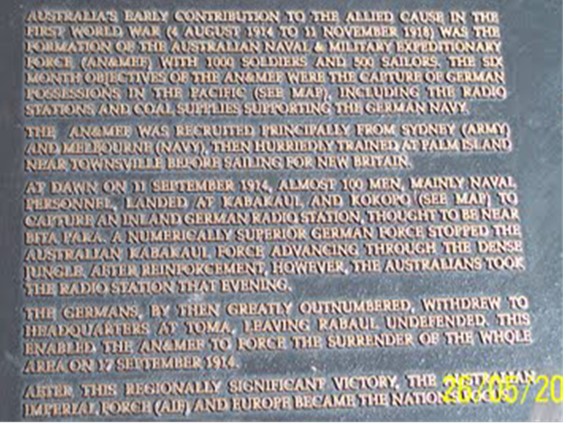
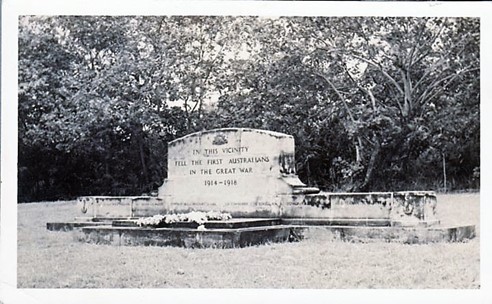
The following is taken from
https://sites.google.com/site/simpsonhafen/bita-paka-1914
The Australian Naval & Military Expeditionary Force (AN&MEF) was formed on 6 August 1914. Its sole purpose was to destroy German wireless stations, operating in the Caroline Islands at Nauru and New Britain, which were communicating with the German East Asian Cruiser squadron operating in Pacific waters. The ANMEF was raised separately from the Australian Imperial Force, and comprised 1,500 militia infantry and 500 naval reservists and ex-sailors. On 11 September 1914 shore parties landed unopposed at Rabaul and nearby Kabakaul, where a patrol of 25 Australian naval reservists pushed inland to the wireless station at Bita Paka. There they were engaged by a composite force of German reservists and Melanesian police. In this action Australia suffered six dead and five wounded, and took possession of the wireless station. It was the first Australian action of the First World War. Those Australians killed at Bita Paka were the first Australian troops to die of more than 60,000 killed in the four-year conflict
Further Reading:
Heroes before Gallipoli: Bita Paka, and that one day in September by Kevin Meade
https://www.navyhistory.org.au/erle-alwin-greglach-boyd/
https://seapower.navy.gov.au/people-and-culture/biographies/chief-petty-officer-erle-alwin-greglach-boyd
https://sites.google.com/site/simpsonhafen/bita-paka-1914




